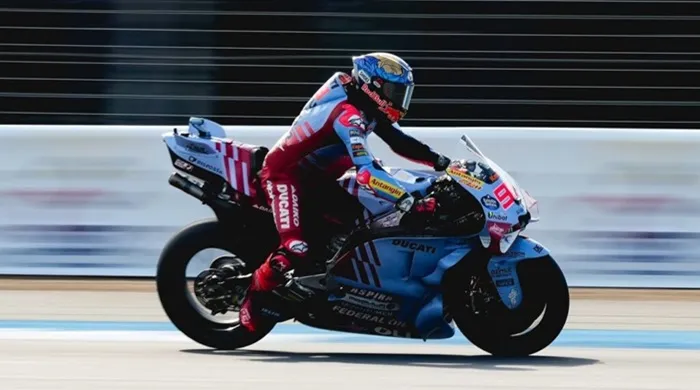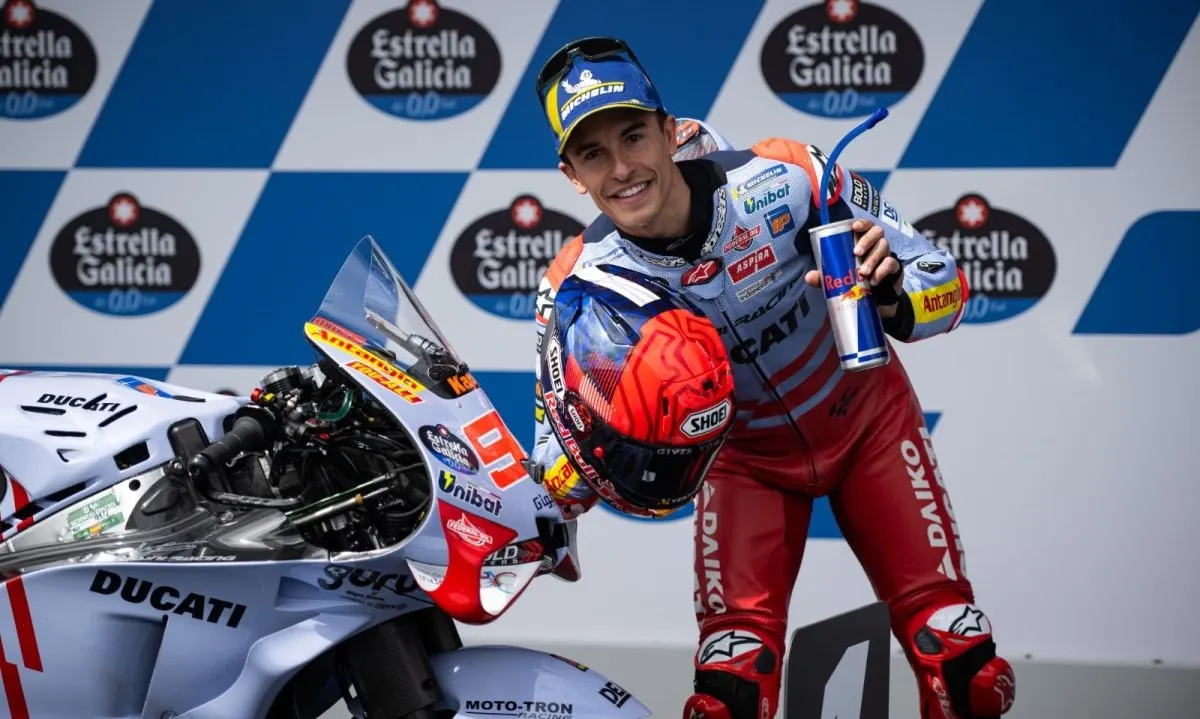
Trackhouse Racing team manager Wilco Zeelenberg admits he “thought this year it was impossible” to see a MotoGP rookie get on the podium before Pedro Acosta proved him wrong.
Last year’s Moto2 world champion Acosta’s arrival to MotoGP was widely tipped to be impressive, with the 20-year-old having blazed a trail through the paddock since his grand prix debut in Moto3 in 2021.
Acosta scored a podium in just his second grand prix start in 2024 with Tech3 GASGAS and has taken five Sunday rostrums so far to currently sit just ahead of KTM stablemate Brad Binder in fifth in the standings.
Next year MotoGP will welcome three rookies to the class in the form of reigning Moto2 champion Ai Ogura, double Moto2 grand prix winner Somkiat Chantra, and eight-time Moto2 winner Fermin Aldeguer.
Ogura’s surprise MotoGP move with Trackhouse Aprilia is a contract that has aged extremely well since it was signed in the summer, with expectations surrounding the Japanese rider high.
Zeelenberg, who will leave his Trackhouse post at the end of 2024, doesn’t believe expecting rookies to win is fair but Acosta has shifted expectations for what is still possible for a rookie.
“To expect that they can win the first race when they are a rookie is also not their task,” he told TNT Sport.
“They need to stay on the bike and learn step by step. You see with Pedro how quick it can be, to be on the podium in the first season is very hard.
“I thought this year it was not possible anymore, because the championship went like that, performance-wise, speed-wise, and Pedro could do it.
“So, it’s still possible to be as a rookie on the podium in the first year.
“This is clear, this year it happened. I love to start up with rookies, because then you can give all of your expertise and experience to avoid them making mistakes, but also help them learn to go step-by-step on these big bikes.”
Zeelenberg added: “I think Ai is quite special. First of all, he has been fighting for the championship, so he has been seeing his bike but he was [saying] ‘let me focus on my championship first’.
“So, that’s I think very important, and he did. He has the title now in the pocket. So, they’re all worried, they’re all nervous when they arrive on this new rockets, they all are kind of shaking.
“So, they need half a season to get into the real shape and the maximum performance that they could do. Then for sure they will learn more, but they need half a season to get the maximum out of the package.”
For modern rookies, Zeelenberg says the biggest step they have to make when coming to MotoGP is riding with electronics - something they don’t really do in their careers to that point.
“First of all, I really like that path to do, but it’s not so easy to fill in,” he said about rookies filling MotoGP seats.
“Of course, these young boys, when they come from rookies to a new class - especially MotoGP - they have to get used to the electronics.
“And they have been using their skills and their talents through the whole period of their career without electronics: no traction control, no anti-wheelie, all this kind of things that are very important on a MotoGP bike.
“They need to trust the electronics, basically, and that’s not easy to do.
“The talent is there, the speed is there, but to be able to open the throttle and make sure that the bike doesn’t spit you off, this is something they need to work on first of all and that’s their main task.”



